Stonehenge: Temple near site shows evidence of a religious revolution - when Britons switched from worshipping landscape features to a solar cult
Remains of buried temple may mark point of religious transformation when prehistoric society shifted from worshipping landscape to the Sun
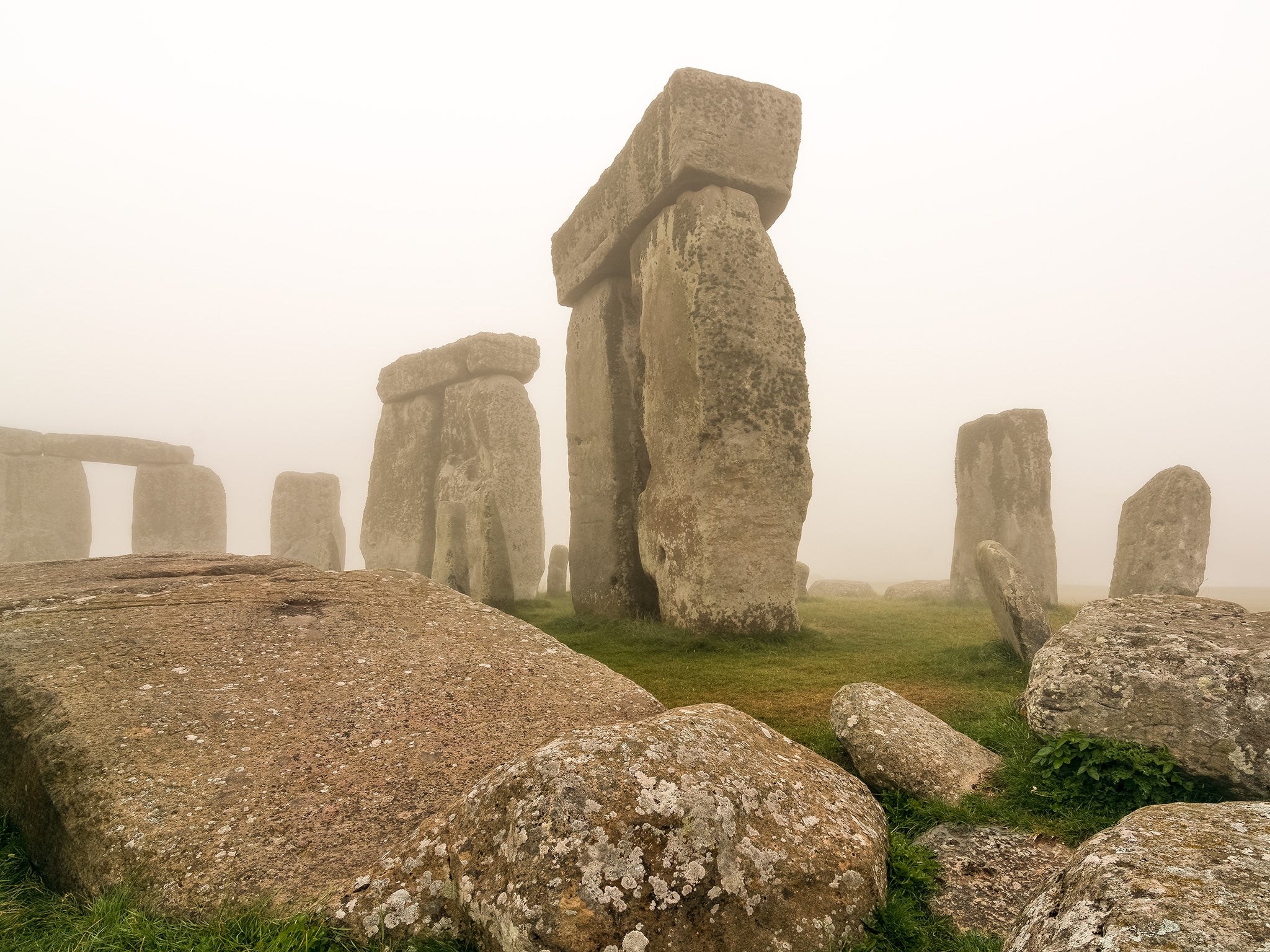
Your support helps us to tell the story
From reproductive rights to climate change to Big Tech, The Independent is on the ground when the story is developing. Whether it's investigating the financials of Elon Musk's pro-Trump PAC or producing our latest documentary, 'The A Word', which shines a light on the American women fighting for reproductive rights, we know how important it is to parse out the facts from the messaging.
At such a critical moment in US history, we need reporters on the ground. Your donation allows us to keep sending journalists to speak to both sides of the story.
The Independent is trusted by Americans across the entire political spectrum. And unlike many other quality news outlets, we choose not to lock Americans out of our reporting and analysis with paywalls. We believe quality journalism should be available to everyone, paid for by those who can afford it.
Your support makes all the difference.The remains of a prehistoric temple a couple of miles from Stonehenge is yielding evidence of a prehistoric religious revolution, in which ancient Britons apparently switched from the worship of landscape features like hills to some form of solar cult.
Archaeologists are making remarkable new discoveries which help demonstrate how Stonehenge ushered in a period of religious transformation in which a previous religious system appears to have been overturned and replaced by a new one.
Almost exactly a year ago The Independent revealed how the archaeologists – from Britain and Austria - had used ground-penetrating radar to discover a previously unknown prehistoric temple two miles north-east of Stonehenge. Now research over recent months and additional ground-penetrating radar survey work, carried out just last week, has revealed that the temple was even more impressive than first thought.
Archaeologists now believe that the newly discovered temple – the massive stones of which are buried underneath a slightly later prehistoric monument - was deliberately decommissioned as part of a dramatic religious transformation. The burying of the stones may conceivably have represented a switch to a solar cult after generations in which a local topographical feature – a prominent nearby hill – had potentially been a major focus of reverence.
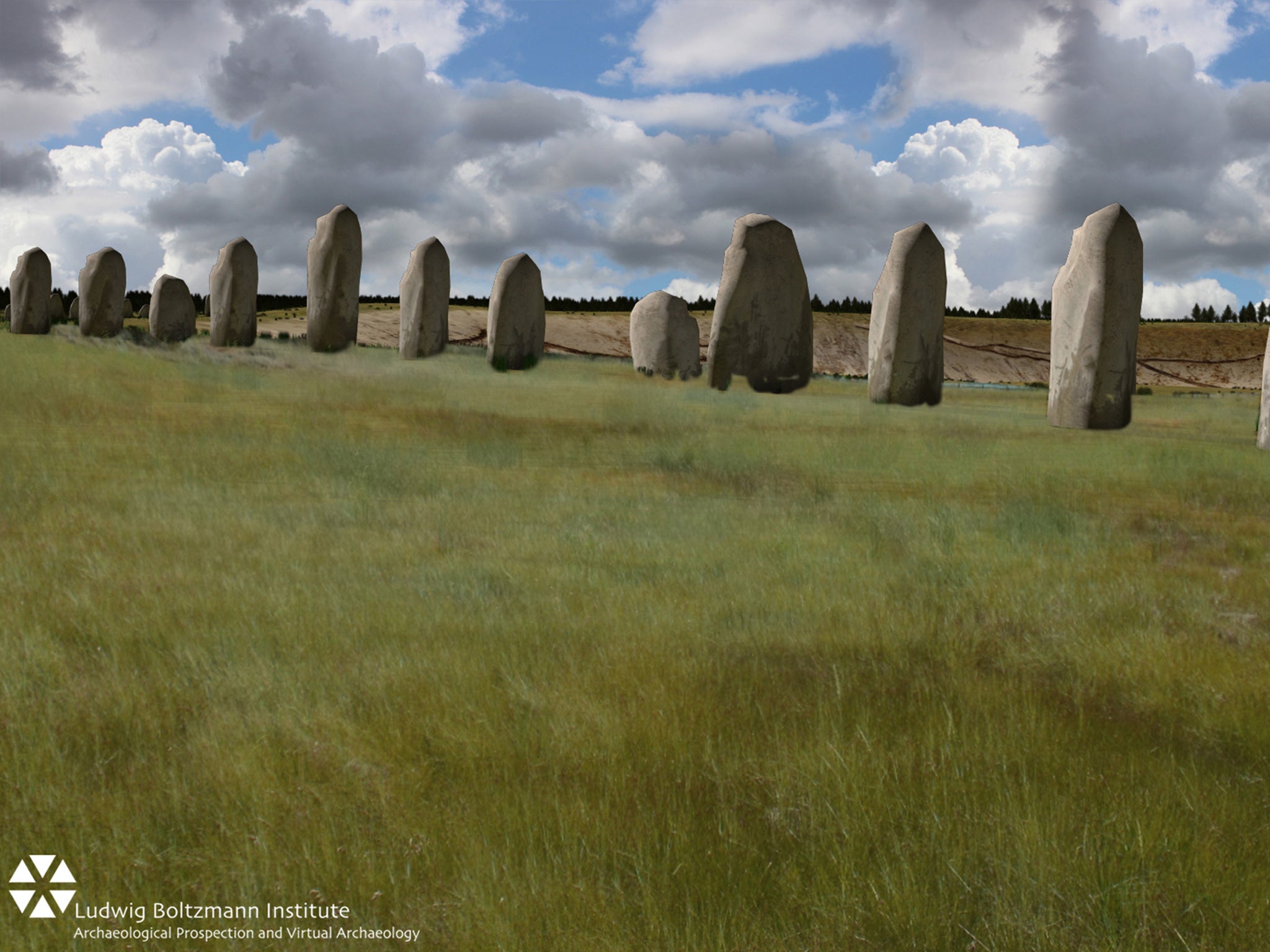
Initially – some time in the first half of the third millennium BC and potentially before the main phase of Stonehenge was built in c2600BC – a huge probably horseshoe-shaped temple was established near what is now the village of Durrington, in Wiltshire. The 800 metre long southern and western part of the ‘horseshoe’ appears to have been made of at least 200 large standing stones, most of them around 3 metres tall and 1.5 metres wide.
So far the archaeologists, through their ground-penetrating-radar imaging system, have ‘seen’ 40 complete buried stones, some 35 broken ones and around 50 buried ‘holes’ in which stones had once stood. However, the horseshoe temple’s northern perimeter appears not to have been marked by standing stones – but instead by a curved ridge of naturally high ground (defining the western and northern edge of the site) which had been artificially steepened at some stage, potentially when the stones were erected.
If so, this artificially-steepened four metre high scarp would have looked like a low chalk cliff at the back and northern side of the temple.
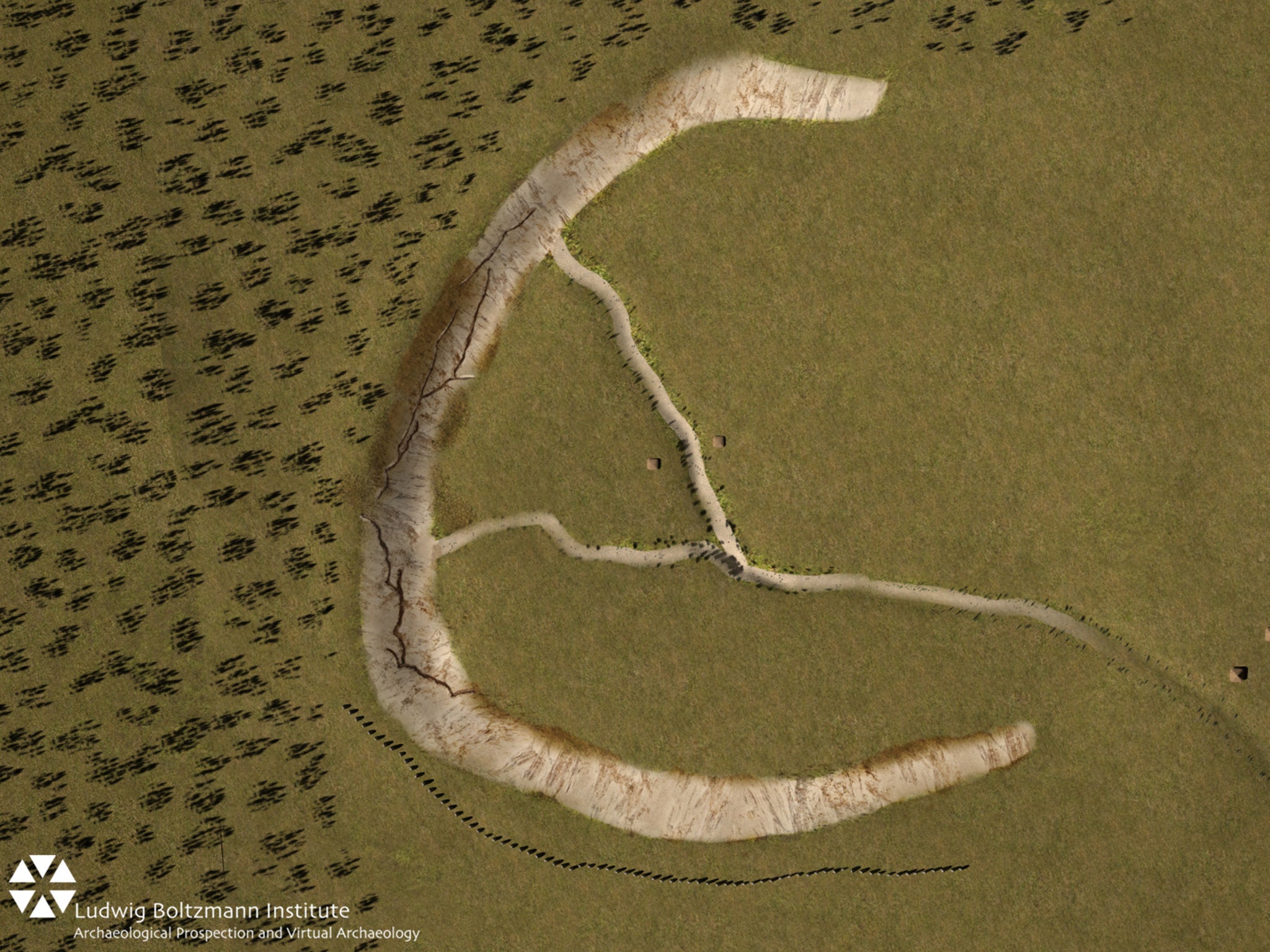
The entire horseshoe arrangement faced virtually due east and appears to have been aligned with a specific and very prominent natural landmark (now known as Beacon Hill) some three miles away. Significantly, this is the same hill that the western part of the 1.9 mile long pre-Stonehenge era sacred enclosure – the so-called ‘Stonehenge Cursus’ (potentially a place for Neolithic religious processions) – is also aligned with.
It therefore now appears that this major natural feature, Beacon Hill, may well have been of greater significance in prehistoric times than previously realized. Indeed, it is conceivable that it was revered as some sort of sacred landmark – perhaps embodying a now long forgotten nature spirit or deity. Identification of prominent topographical features with divine beings or nature spirits is common in many of the world’s most ancient indigenous religious traditions.
In around 2600 BC, the Beacon-Hill-aligned cursus was finally eclipsed by the construction of a new solar cult temple – the ‘giant stones’ main phase of Stonehenge – and, in around 2500 BC, the Durrington horseshoe was decommissioned and replaced with a second solar-oriented temple, a so-called ‘henge’ monument, today known as Durrington Walls.
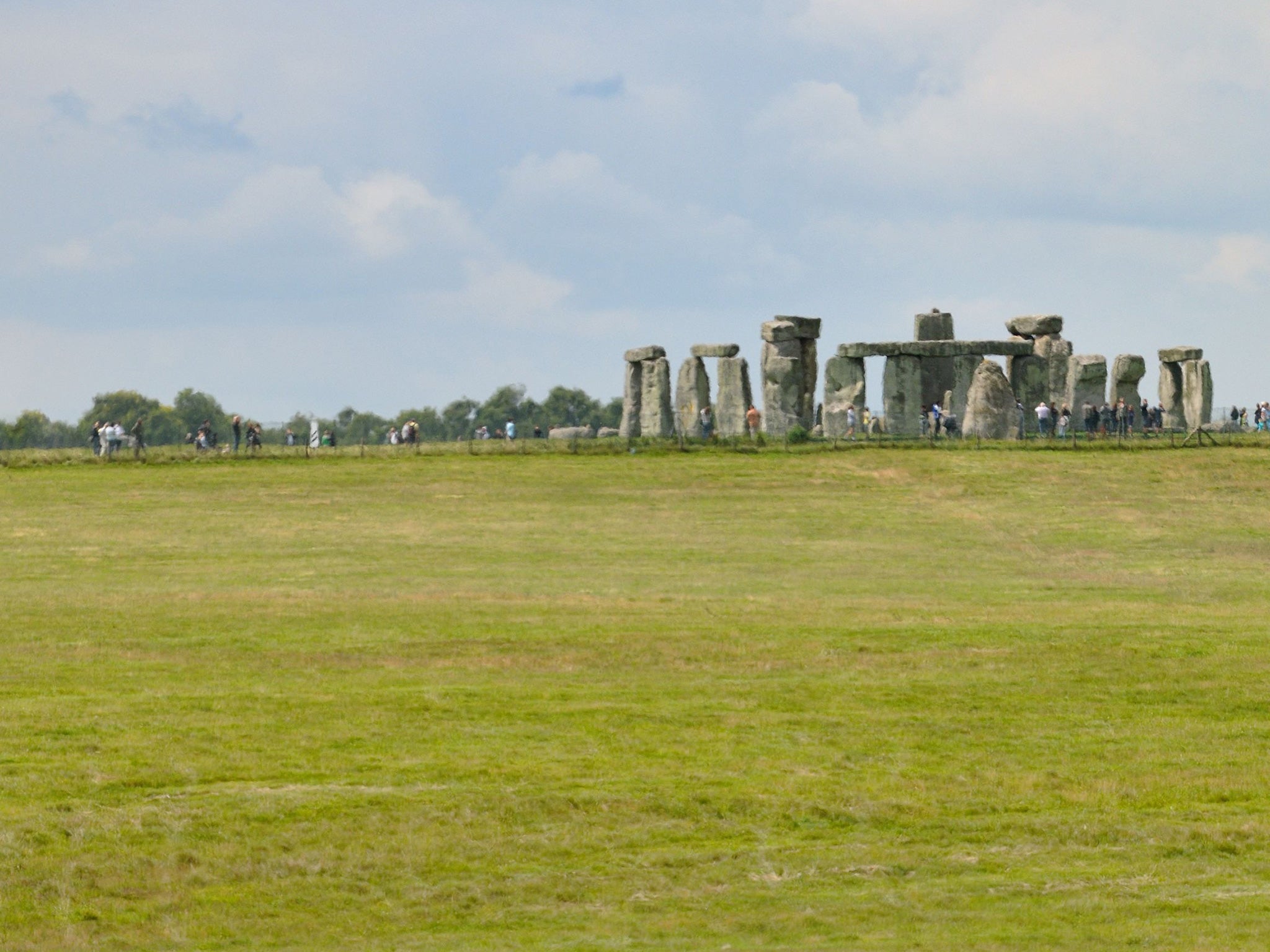
It appears that the stones of the original horseshoe were deliberately pulled out of their sockets and were then pushed over on their sides and deliberately buried under the southern and western part of the newly constructed earthwork embankment which linked up with the natural (and potentially already artificially scarped) curved ridge to form the roughly circular Durrington Walls henge.
It is the most dramatic example yet discovered of the precise moment a site changed from a pre ‘Stonehenge main phase’ tradition to a ‘Stonehenge solar phase’ one.
Normally, in Britain and around the world, such religious changes are only known from much later periods when historical records were kept – such as the change-over from Roman sun worship to Christianity or from Arabian paganism to Islam or from Catholicism to Protestantism in Reformation Europe.
In prehistory, the nature and moment of religious change is not usually so visible and capable of being so well understood and appreciated. The buried ‘standing stones’ discovery at Durrington Walls is therefore likely to prove an exception to that rule.
The geophysical survey work at the site and elsewhere in the Stonehenge landscape has involved archaeologists from three academic institutions – Bradford and Birmingham universities, and Austria’s Ludwig Boltzmann Institute.
“The discovery of the stones under Durrington Walls changes in a dramatic way our understanding of the development of the Stonehenge landscape,” said Professor Vince Gaffney of Bradford University.
“The burying of the stones in Neolithic times almost certainly represented significant social and ritual change,” he said.
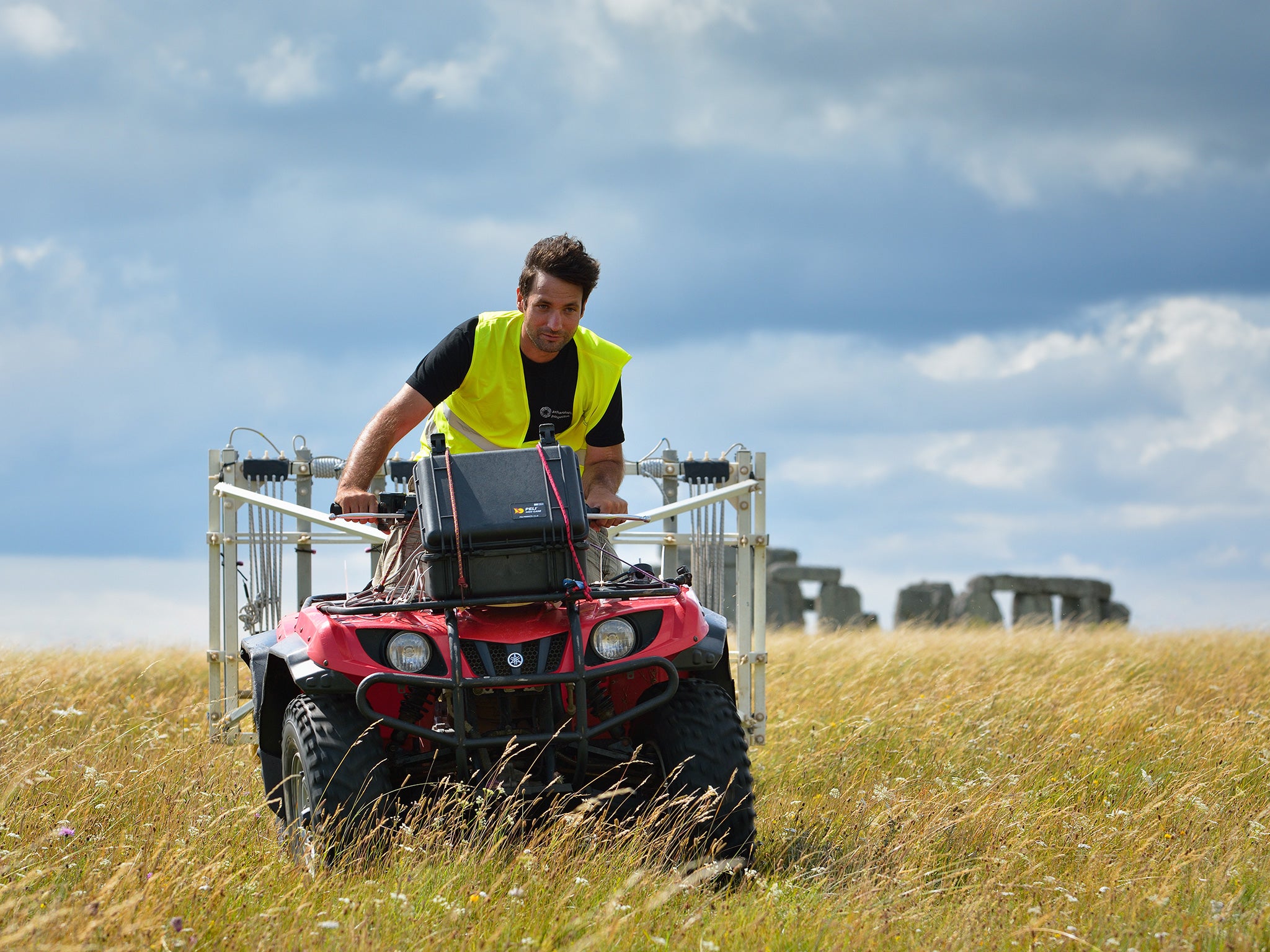
The ‘buried stones’ discovery under Durrington Walls henge will almost certainly trigger geophysical investigations at other henge sites to try to ascertain whether their often massive earthworks also conceal hitherto unsuspected buried ‘standing stone’ systems. Prime candidates for such investigations may include the great henge monuments at Avebury and Marden (both in Wiltshire) and Mount Pleasant (in Dorset)
Interestingly, archaeologists have long suspected that Avebury and some other important Neolithic henge sites probably had pre-henge ritual structures.
The ‘solar cult’ religious revolution, that the dramatic change at Durrington Walls represents, appears to have been part of a much wider societal transformation in which ceramic styles changed and feasting and pork consumption was introduced on a grand scale.
The discovery of the long-buried standing stones of the Durrington horseshoe is part of a wider archaeological survey of the Stonehenge landscape, led by Professor Vince Gaffney of Bradford University and Professor Wolfgang Neubauer of the Ludwig Boltzmann Institute in Vienna , which, over the past five years, has revealed the existence of more than 20 previously unknown Stonehenge era monuments.
The sites of some of these newly discovered monuments – mainly shrines and sacred enclosures – are within just half a mile of Stonehenge itself.
Their discovery reveals that Stonehenge did not exist in splendid isolation but lay at the heart of a series of other smaller religious or ceremonial structures. A more detailed analysis of these newly discovered monuments is now likely to shed new light on the nature of society at the time of Stonehenge.
One major new monument discovered very near to Stonehenge was a 20 metre diameter ring of large wooden posts. Ground penetrating radar was used to detect the holes in which these timber uprights had originally stood.
The survey – known as the Stonehenge Hidden Landscapes Project – has also discovered thousands of new details about literally hundreds of previously known Neolithic and Bronze Age monuments within Stonehenge’s sacred landscape.
Over the past five years, some five square miles have been surveyed using ground penetrating radar, magnetometry and electro-magnetic induction.
Join our commenting forum
Join thought-provoking conversations, follow other Independent readers and see their replies
0Comments